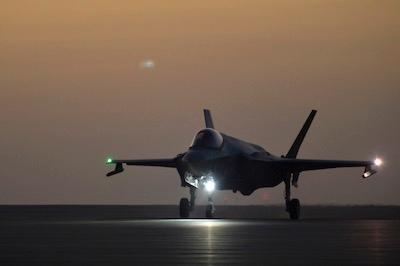Conducted Operations In Nine Different Countries On Three Separate Continents
As the Air Force continues to sharpen its competitive edge to become a more lethal and ready force, the first combat-coded F-35A Lightning II wing has been a key contributor to the force’s overall readiness.

Over the summer, all three squadrons — nearly 70 F-35A aircraft — were operating away from home station. They conducted operations in nine different countries on three separate continents, while supporting multiple combatant commanders. One squadron supported a European Theater Support Package, another squadron conducted off-station operations at Mountain Home Air Force Base, Idaho, while Hill AFB’s runway was under construction and one squadron is currently conducting the first F-35A combat deployment.
The wing successfully supported all of these requirements. “It was a team effort, and I’m proud of our folks,” said Col. Steven Behmer, 388th Fighter Wing commander. “We’re focused on maintaining and improving every aspect of readiness – training, manning and developing our people and tactics to meet current threats. Our maintainers are doing a great job providing the sorties we need to do just that.”
Those successes can be attributed to several factors; from the accelerating experience levels of the maintainers, to rebounds in the supply process. Not everything has been a recent fix. The numbers are catching up to past process improvements. “A lot of the time people’s perceptions and expectations of the program are influenced by stale data, old (and) inaccurate information,” said Chief Master Sgt. Trey Munn, 388th Maintenance Group chief enlisted manager. “A really good example is the (Autonomic Logistics Information System). There are definitely applications within ALIS that still need to be addressed, but the prognostic health management system and joint technical data are great examples of where ALIS, on the whole, has improved and we’ve improved.”
Col. Michael Miles, 388th MXG commander, said the jet’s prognostics health management system can detect problems before they fail and allow maintainers to prioritize workload. Making prudent maintenance decisions in coordination with the operations group’s flying schedule is a key process enabled by these systems.
The newest batch of jets from Lockheed Martin’s production facility in Fort Worth, Texas, are also reflected in the improvements. “We’re not seeing the same problem parts and issues that we did in the past,” Miles said. “Problems sent in from the field are being addressed, and solutions are woven into the production line. I like the trajectory we’re currently on. There have been some valleys, but our overall experience shows we’re on a readiness incline.”
Last fall, former Defense Secretary James Mattis directed Air Force and Navy fighter squadrons to improve material readiness by achieving a mission-capable rate of 80% – something many believed to be a lofty goal given the operations tempo, manning and resource constraints faced by all of the services.
Twelve months later, materiel readiness at the 388th FW, to include one squadron currently deployed, has seen remarkable improvements. This was highlighted when the 388th FW units hit a single day high in September with two units above 90% mission capable and the third unit above 80%. This is a huge testament to the level of effort the Airmen maintaining and sustaining the F-35A have put in over this year. “This is a reflection of processes that are on the right track. It took hard work and there will be a lot of naysayers, and many people don’t understand the trajectory the program is on,” Miles said.
Mission-capable rates are just one component assessed at the unit level to determine readiness. In a recent interview, Air Force Chief of Staff Gen. David Goldfein described five aspects of overall readiness: training Airmen, sustainable budgets and funding, mission preparation, reliable logistics supply chain of available parts and flying hours.
Parts and systems are not the only thing required to maintain aircraft. So are people. “Experience levels are often overlooked in the maintenance equation,” Miles said. “We had a really robust talent pool when we stood up our first operational aircraft maintenance unit in 2015. Over time, that experience level became diluted as we stood up two other AMUs, lost people to (permanent change of station) and retirement, and we had a lot of brand new F-35A maintainers. It takes time to build that experience level back up.”
“MC rates are important, but do not represent a complete measure of overall readiness,” Goldfein said. “You’ve got to have trained and ready Airmen to get the job done. What really matters is that I’ve got trained and ready crews … and we’ve been able to meet those timelines and actually exceed them. That’s what counts.”
(Image provided with USAF news release)
 ANN's Daily Aero-Term (04.25.24): Airport Rotating Beacon
ANN's Daily Aero-Term (04.25.24): Airport Rotating Beacon ANN's Daily Aero-Linx (04.25.24)
ANN's Daily Aero-Linx (04.25.24) Klyde Morris (04.22.24)
Klyde Morris (04.22.24) Airborne 04.24.24: INTEGRAL E, Elixir USA, M700 RVSM
Airborne 04.24.24: INTEGRAL E, Elixir USA, M700 RVSM Airborne 04.22.24: Rotor X Worsens, Airport Fees 4 FNB?, USMC Drone Pilot
Airborne 04.22.24: Rotor X Worsens, Airport Fees 4 FNB?, USMC Drone Pilot



